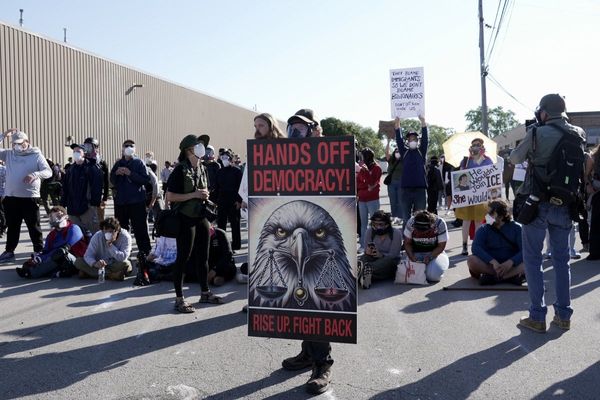
There are few signals I trust more than executives pulling out their own checkbooks when a stock screens cheap. Open-market insider buying is not a perfect tell, but when you combine real dollars from the C-suite with objective measures of undervaluation, the edge shows up, again and again, over long samples.
Think of it as stacking the first margin of safety (assets and cash flow) with the second margin of safety (aligned incentives).
Over the last quarter century and beyond, three combinations have been especially productive. First, insider buying when shares trade at or below tangible book.
Second, insider buying when the enterprise trades at a basement EV/EBIT multiple.
Third, insider buying in companies on single-digit or low-teens P/E ratios that also yield more than 3%.
These are not theoretical ideas. They have been tested across decades of U.S. data and have produced repeatable, above-market outcomes.
The book-value overlay is the original Ben Graham tell. When price sits below the net hard assets and the people closest to those assets are buying in the open market, the odds tilt our way.
Historical tests that bucket stocks by valuation show that in the lowest price-to-book quintiles, one-year excess returns following insider purchases are positive and meaningful, and they rise when the buyer is a top executive making a non-token purchase. That is exactly what you would expect.
The market is telling you the assets are suspect; the insider is telling you they are not.
The EV/EBIT overlay is the modern workhorse.
If you buy the cheapest decile or two of U.S. stocks on enterprise value to operating earnings, you start with a double-digit base return over long horizons. Layer insider buying on top and you are essentially betting that today's depressed earnings power is cyclical rather than structural. In my experience that is where the fat pitches live.
The executives know order books, contract pricing, lead times, and the cadence of cost resets better than we do. When they buy into a crushed multiple, they are telling you that normalized EBIT is higher than the market thinks.
The income overlay is the most intuitive for conservative investors. A low P/E and a dividend north of 3% usually means the market is pricing in a cut, an erosion of earnings power, or both.
When insiders step up in that tape, they are signaling durability. Historical work on post-purchase performance in the lowest P/E buckets shows the same pattern as book value: solid one-year excess returns after insider buys, with larger effects when the buyer is senior and the check is meaningful. You also occasionally get the turbocharger of a "credibility moment," when a large, public purchase from a well-known CEO resets sentiment.
One thing that is often missed in these discussions is holding period. The signal is not a one-week trade. The edge compounds over 12 to 36 months.
In studies that track insider buys inside the cheapest valuation buckets, cumulative excess returns tend to grow as you extend the window from one year out to two and three years. That tells you what this really is: a patient, value-plus-behavioral strategy that harvests mispricing's created by fear, forced selling, and anchoring to stale narratives.
None of this is magic.
It is blocking and tackling.
For tangible book setups, you want clean assets, conservative accounting, and a path to monetization if the market refuses to rerate.
For EV/EBIT, make sure you are using normalized EBIT, not a cyclical peak, and reconcile enterprise value for hidden liabilities and off-balance-sheet claims.
For the income overlay, underwrite the payout with coverage ratios, forward free cash flow, and refinancing needs. And in all cases, verify that the insider buys are open-market purchases, not option exercises or pre-programmed plans. The signal you want is discretionary.
A workable rule set falls right out of the evidence. Focus on U.S. names, all caps allowed. Require at least one recent open-market insider purchase, preferably from a director or C-suite officer writing a check that matters relative to their compensation. For valuation, take any one of the following and weight higher when two are present.
First, price to tangible book at or below one, especially at a discount to peers.
Second, EV/EBIT parked in the bottom decile or at a deep discount to its own ten-year history and sector medians after normalizing EBIT.
Third, P/E in the single digits or low teens with a dividend yield above 3% that you can underwrite. Build a 15 to 30 name basket, equal-weight it, and let it season for 12 to 24 months. Rebalance on signal refresh, not on price alone.
There are obvious potholes. Value traps exist, especially where the assets are less liquid or the economics of the business are degrading faster than management admits. Some insider buys are window dressing. Clusters matter more than lone wolves, and repeat buyers matter more than one-timers. Watch leverage, maturities, and covenants. Rising rates exposed a lot of sins; falling rates will not save every balance sheet.
When in doubt, cut position size and let the basket do the work.
If you want a simple way to implement this inside a disciplined process, treat insider buying as a confirmation, not a primary screen.
Start with cheap.
From that cheap cohort, elevate the names where the people with the best information are buying in the same tape you are. That small change does two big things.
It tilts you away from statistical value that management will not defend and toward assets where the stewards are signaling commitment. And it lengthens your time horizon, because it is easier to sit through volatility when you know the CFO is sitting there with you.
The punch line is straightforward. Over long samples, cheap stocks bought by their own executives have generated attractive one-year excess returns, and those edges persist into year two and year three.
In EV/EBIT land, the cheap cohort already pulls ahead; adding insider conviction improves the asymmetry. In the income cohort, the signal helps separate safe high yields from value mirages. This is the kind of edge we can actually use: simple, evidence-based, and grounded in the timeless idea that price, value, and aligned incentives still matter.
Here are the stock to get you started on your journey.
Shenandoah Telecommunications (Ticker: SHEN) fits that mold. Shentel is a Mid-Atlantic broadband operator that has gone fiber first under the Glo Fiber brand, building out FTTH across Virginia, West Virginia, Pennsylvania, Maryland, and Ohio while continuing to sell enterprise connectivity and lease dark fiber on a network that spans more than sixteen thousand route miles. The operating story is straightforward. They open new markets, Glo Fiber subscribers climb, and the economic value of the network increases with each quarter of penetration.
The valuation is the hook. Shares have been trading around 0.8 times book value, with reported tangible book per share in the low to mid-teens depending on period. That is a meaningful discount for a regulated, physical-asset business with visible reinvestment opportunities. Insiders have put fresh money to work in the open market. In August and early September 2025, beneficial owner entities tied to Energy Capital Partners added stock in multiple prints roughly in the twelve to fifteen dollar range, and on August 11 the long-tenured chief executive, Christopher French, disclosed a personal buy of sixteen thousand eight hundred shares near 11.83. A cluster of open market purchases at these marks raises the probability that the gap between price and asset value can close as fiber penetration improves.
Ichor Holdings (Ticker: ICHR) designs and manufactures critical fluid-delivery subsystems for semiconductor capital equipment, the ultra-clean plumbing inside etch and deposition tools that has to work perfectly every hour of every day. It is a cyclical supplier to a cyclical industry, which is why it can go on sale at the right time. When orders slow and the industry narrative turns gloomy, investors sell first and ask questions later. That is the moment to measure the balance sheet and look for insider tells.
The balance sheet lens is favorable today. Book value per share sits around 20.27 and the stock has been trading roughly 0.8 to 0.9 times book, toward the low end of its ten-year range. More important, we have the insider confirmation we look for. On August 7, 2025, director Iain MacKenzie bought twenty-five thousand shares in the open market at a weighted average price near 16.63. Director Marc Haugen added three thousand shares around 17.75 the same day and another three thousand near 17.64 on August 8. These straightforward, discretionary purchases against a sub-one-times-book valuation in a business with clear operating leverage into the next upcycle are exactly the combination we want to own.
Global Indemnity Group (Ticker: GBLI)sits squarely in our sweet spot for specialty insurers. The company writes niche commercial lines for small and middle-market customers through a family of admitted and E&S carriers, with an AM Best A rating and nationwide reach. The product mix runs from commercial auto and excess casualty to focused verticals like equine and cannabis, and the group has reinsurance capability. This is a conservative balance-sheet business that earns its money underwriting where bigger carriers either price bluntly or will not bother.
The valuation and insider tape line up. Book value per share was 48.35 at June 30, 2025, and the stock has been trading at roughly 0.6 times price to book. The board paid a 0.35 quarterly dividend on June 27, which puts the indicated yield near 5% at recent prices. More important, the chief executive has been writing real checks in the open market. There was a five thousand share buy at 29.50 on August 11, a five hundred share add at 28.00 on August 12, and two thousand shares at 30.00 on August 20. An officer also purchased one hundred shares at 28.79 on August 12. Sub-one-times book, a supported cash yield, and discretionary insider buying is the pattern we want to see when we underwrite specialty insurance.







